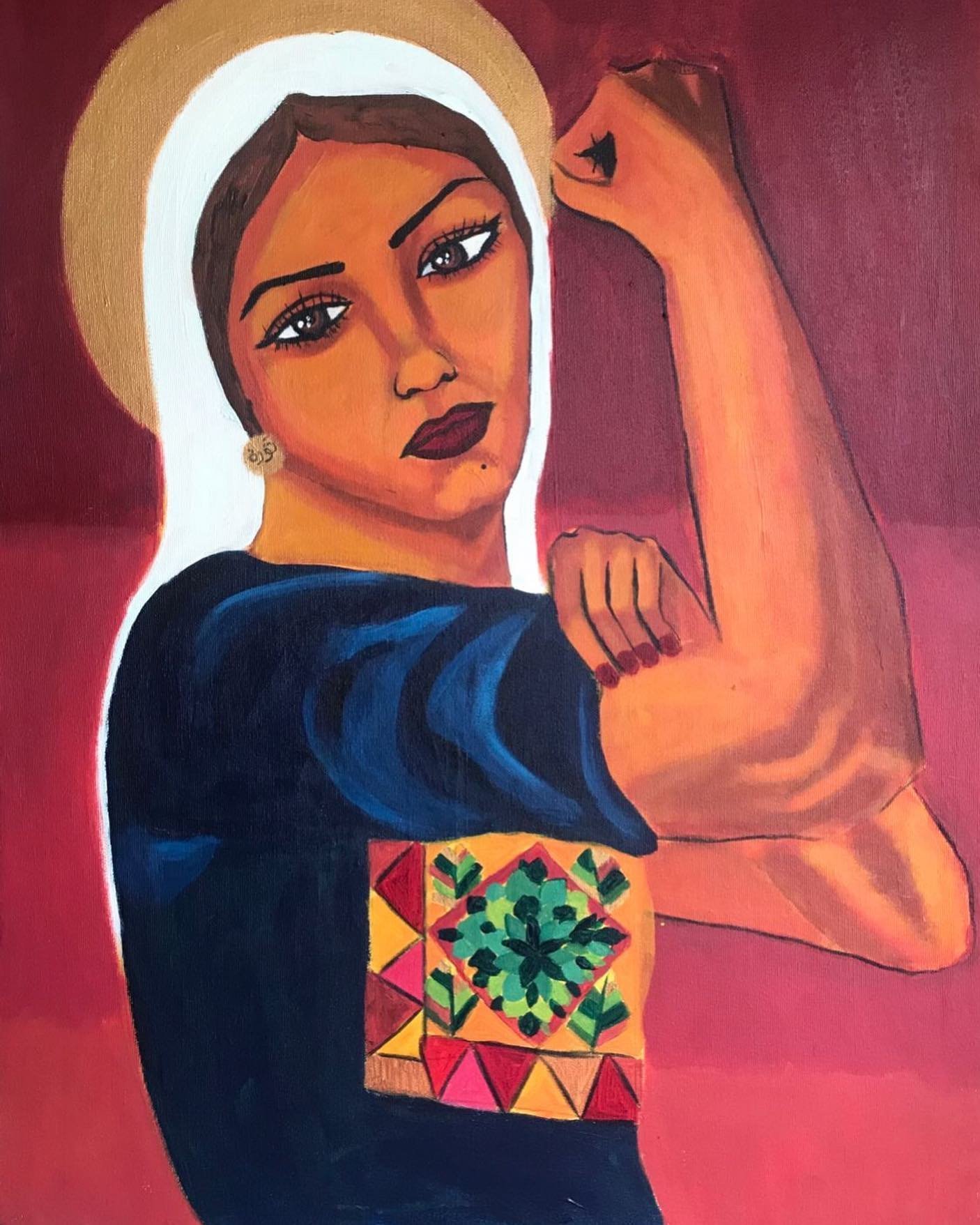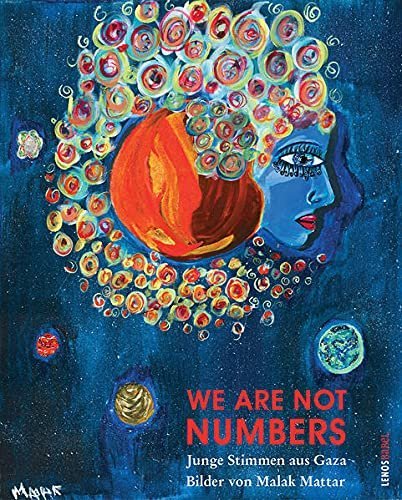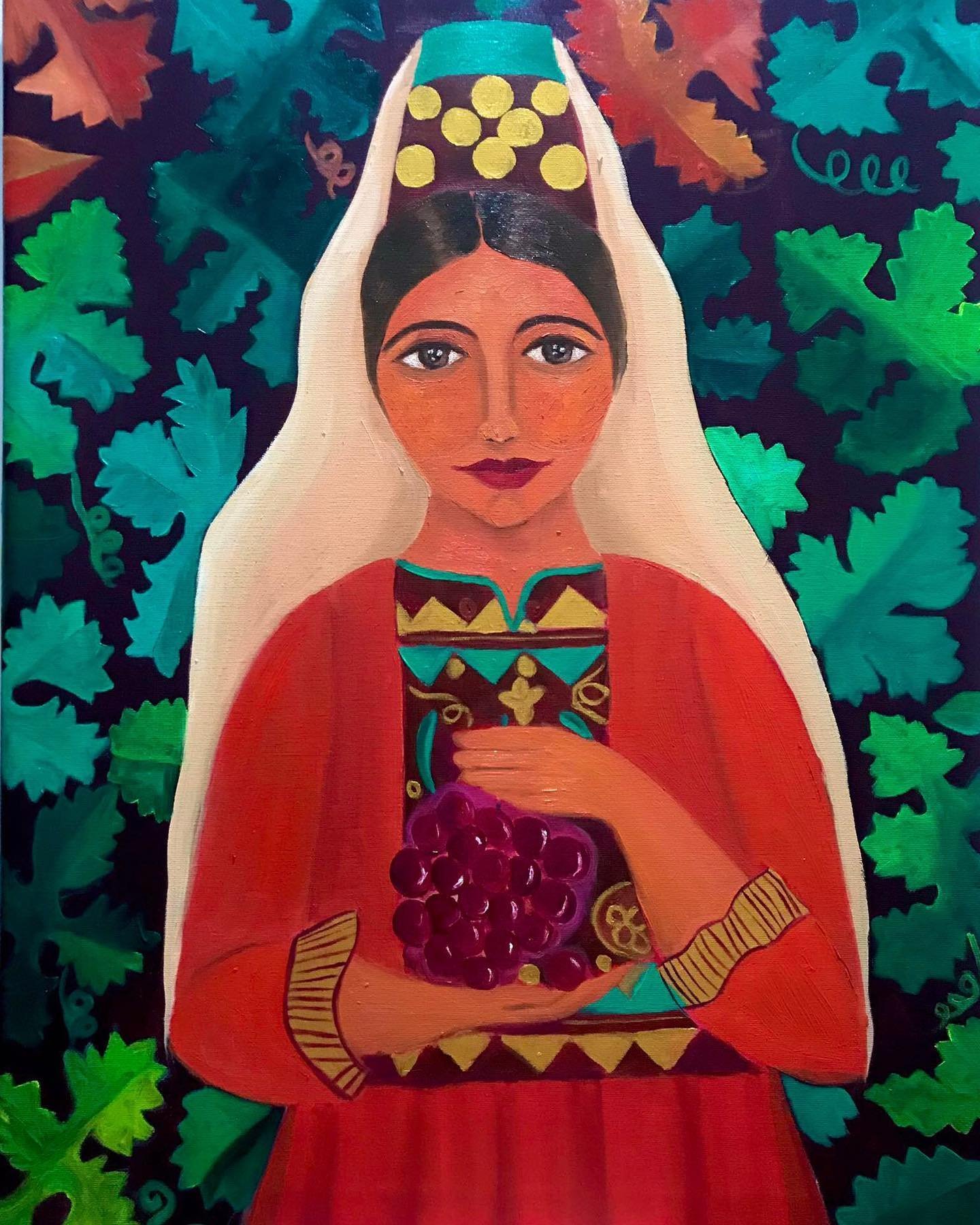Palestine’s Picasso: Malak Mattar
Kahlil Gibran once said, “Out of suffering have emerged the strongest souls,” and Malak Mattar - like many Palestine refugees - is no exception to this strength. Malak takes the ugly and transforms it into beauty; she views the destruction surrounding her hometown and creates masterpieces.
Malak Mattar is a 22-year-old artist and Palestine refugee from the Gaza Strip. Like most residents in present-day Gaza, Malak and her family are internally displaced Palestinians from other regions in Palestine. Her father’s side is from Al Jorah, a village by the sea in what is now known as Asqalan. Her paternal grandparents were once fishermen.
As for her maternal lineage, Malak’s mother is from Batani al Sharqi, a coastal village south of Palestine. Her maternal grandparents were farmers. Forced to flee during the Nakba, her family arrived in Gaza in 1948, and have been refugees there ever since.
Credit: Maha Selim; Source: Malak Mattar, Facebook
Surviving repetitive Israeli military assaults on the strip, Malak Mattar began painting as a form of coping and self-expression. Painting became her emotional release, and helped her cope with fear, anxiety, and distress.
Malak’s story and Picasso-like style of paintings have gained her worldwide recognition. Her work has been featured in exhibitions in Spain, Turkey, Costa Rica, India, and the United States.
Mattar visited the United States for the first time in August 2019 and shared her art and story with the UNRWA USA team. She spoke to us on how art became a source of therapy, income, and cathartic release, and highlighted UNRWA’s role in her journey. Malak is currently studying political science and international relations at Istanbul Aydin University. Her plans are to pursue a Master’s degree in fine arts in the United States, and to conduct more exhibitions in the future.
Background and Upbringing:
“From first through ninth grade, I attended UNRWA schools. I studied in Al Shati (Beach) School in Gaza but moved around depending on which schools were offering different shifts — morning or afternoon. My teachers and education helped me excel academically. After years of hard work, I was ranked second across all 30,000 Palestinian students in the tawjihi (matriculation) exams and first among all the students in the Gaza Strip.
My favorite classes were math and languages. But the most influential class in my artistic journey was, oddly enough, science class. In fact, the first art materials I ever received and used were watercolors that were given to me as an award from my school when I got full marks on my science exam.
I always saw science as art; as we were essentially painting and illustrating the world around us. For homework, we’d be asked to draw the human body or cell structures. But for me, these assignments were a joy. I was passionate about perfecting the shapes, lines, and colors. I worked hard and remember my teacher showing off my work to my classmates. When we had challenging exams, our teachers would motivate us by rewarding those who received full marks.
“For homework, we’d be asked to draw the human body or cell structures. But for me, these assignments were a joy. I was passionate about perfecting the shapes, lines, and colors.”
Early Beginnings
“During Israel’s military assault in 2014, I remember looking at the shelf with all the art supplies I had accumulated and telling myself that I was going to do something with all these tools. The atmosphere was tense, and we were all afraid, but despite my fear, I remember pulling out a blank paper and beginning to sketch.
The feelings I had during the 2014 Israeli assault propelled me to paint and draw. It was an escape from my fear of death. I still remember that exact feeling every time I look at my first piece. I'll never sell that drawing — not for any price.
During the assault, no one went outside, but everyone had social media. I created an account so I could share my drawings on Facebook and Instagram.
For me, painting opened a world of self-expression, and social media showcased my art to the world. People started messaging me, not only in Arabic, but in English as well. I was excited because this meant people outside of Gaza were paying attention to what was happening in Gaza. A year after that, I decided to have a solo exhibition with 16 of my original pieces on canvas with acrylic. The Spanish, French, and English press reached out to me, and by the time I was 14, I started selling my art to buyers across the world. In just four years, my art has made it to more than 60 exhibitions worldwide.
My teachers’ encouragement and compliments to my artwork marked a turning point in my life. They believed in me and made me feel special, smart, and talented. Then and till this present day I feel connected to them. My mom was an UNRWA English teacher, and she, of course, is one of my biggest fans.”
Style & Inspiration:
“I get my inspiration from everything around me. Palestine, my city, Gaza, my family, people I meet, and everything — the good and the bad — that I face in my life.
I want to share the injustices that my people go through, especially their lack of basic human rights. But also, I want to show the beauty and the strength of my people as well, and the passion we Palestinians have, despite all the struggles we go through in Palestine and in the diaspora.
I was so inspired by Picasso, that in the beginning of my art journey I tried to paint like him. I can also relate to the pain that Frida Kahlo paints. But I decided to go beyond that and find my own style. It was challenging at a young age, but I largely learned from watching YouTube videos
I don’t have any formal art education. I spoke to other people and artists in Gaza to get more guidance. My uncle is a university professor in art and literature, and although he currently lives in Canada, he was once an artist in Gaza and his abstract art inspires me to this day. He has always helped me with my technique, my sketching, and coming up with new ideas.
I was also able to draw inspiration from my trips during my different travels. But most importantly, I am inspired by my surroundings. That is what mattered then when I first started painting, and what still matters to me now.
I am most proud of my Galaxy painting that has been a cover for a film that I was a part off. The film is called Dark Blue, and it was filmed in Gaza. Dark Blue was screened in many European countries. My Galaxy painting was also published as the cover of the book “We are not Numbers”.
“I want to show the beauty and the strength of my people as well, and the passion we Palestinians have, despite all the struggles we go through in Palestine and in the diaspora.”
Challenges as a young, female, refugee artist:
“Like most young people, I have dreams, but I’m also lucky to be able to pursue them. My first dream was to have a solo exhibition. A lot of people criticized me and didn’t believe in me when I shared my ambitions with them.
Gaza, like any other patriarchal society, values male artists over women artists; so many people didn’t see my potential. My family and my teachers, however, were always supportive, but school always came first. Though my mom paid for my expensive acrylics, in the end, school was always the priority because it allowed me to pursue the most opportunities in the future.
Another challenge I faced was living in a conservative society. I was exposed to the media as a 14-year-old and had a lot of press engagement, which was hard in a conservative society. I wasn’t wearing a hijab back then because I was young, but I also faced lots of bullying and criticism for that.
People were very focused on what I was wearing and would often regard me as a representation of the ‘Muslim girl,’ which put a lot of pressure on me and my family. So my parents and I felt like I needed to wear a scarf. I was speaking up about things that were unfair and about the inequality between men and women and being forced to do things that I don’t want to do so that my art can take the focus. I continue to struggle with this inequality, but I make sure I’m covered when I’m on the camera.”
US Experience and Message to Americans:
“I have mixed feelings when it comes to the US. I traveled to seven countries in 2019 and the US was one of my favorites. I went to Washington DC, New York, and Connecticut. The people were so friendly — nowhere else were people as friendly! I was shocked by how simple everything was and how easily you can have conversations with strangers. I did find some parts of the US stressful — DC and New York were a bit overwhelming and intense, especially due to the politics on the ground.
My message to the US is that I'm willing to fight for my humanity and the humanity of all people — especially refugees. I am currently studying political science and international relations at Istanbul Aydin University in Turkey, but even in Turkey, you are judged based on where you are from.
I’m tired of this elitism. What we all share is humanity, and that is the most important thing. What I want to share with the US and the world is that we are all humans, and the noble thing we need to do is to feel for each other. I will help you regardless of where you are from, and I will do so because you are human and because you are vulnerable; can you do the same?
I often feel judged because of my identification or my travel documents or the color of my skin. Even in Gaza, I’m seen as a refugee, but it is my wish to the world that there is no racism, that everyone can travel freely, and that we are all treated equally as human beings.”
You can follow Malak Mattar and support her work via Facebook and Instagram: @malakmattarart





